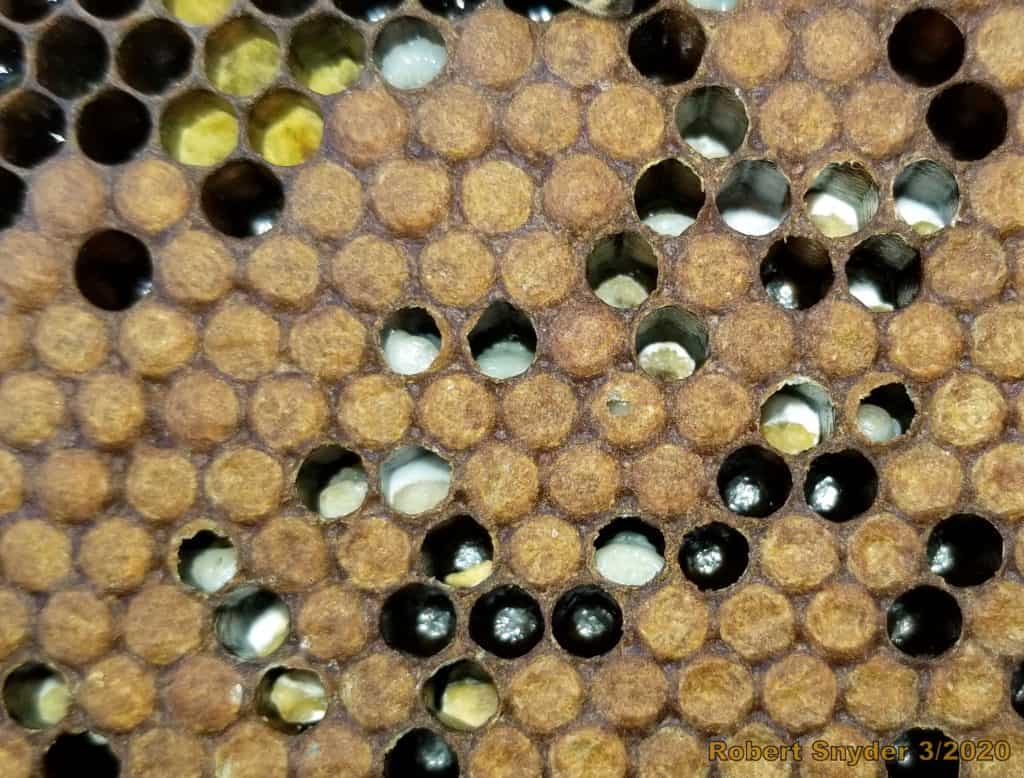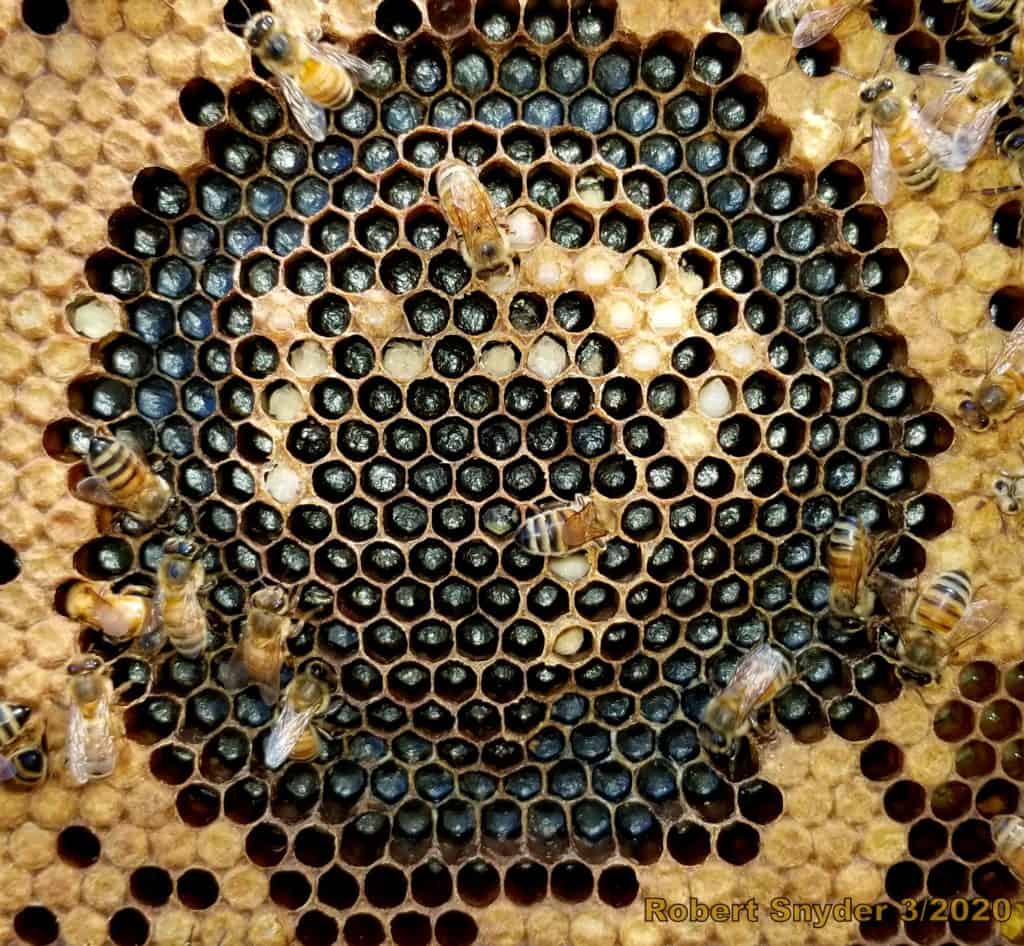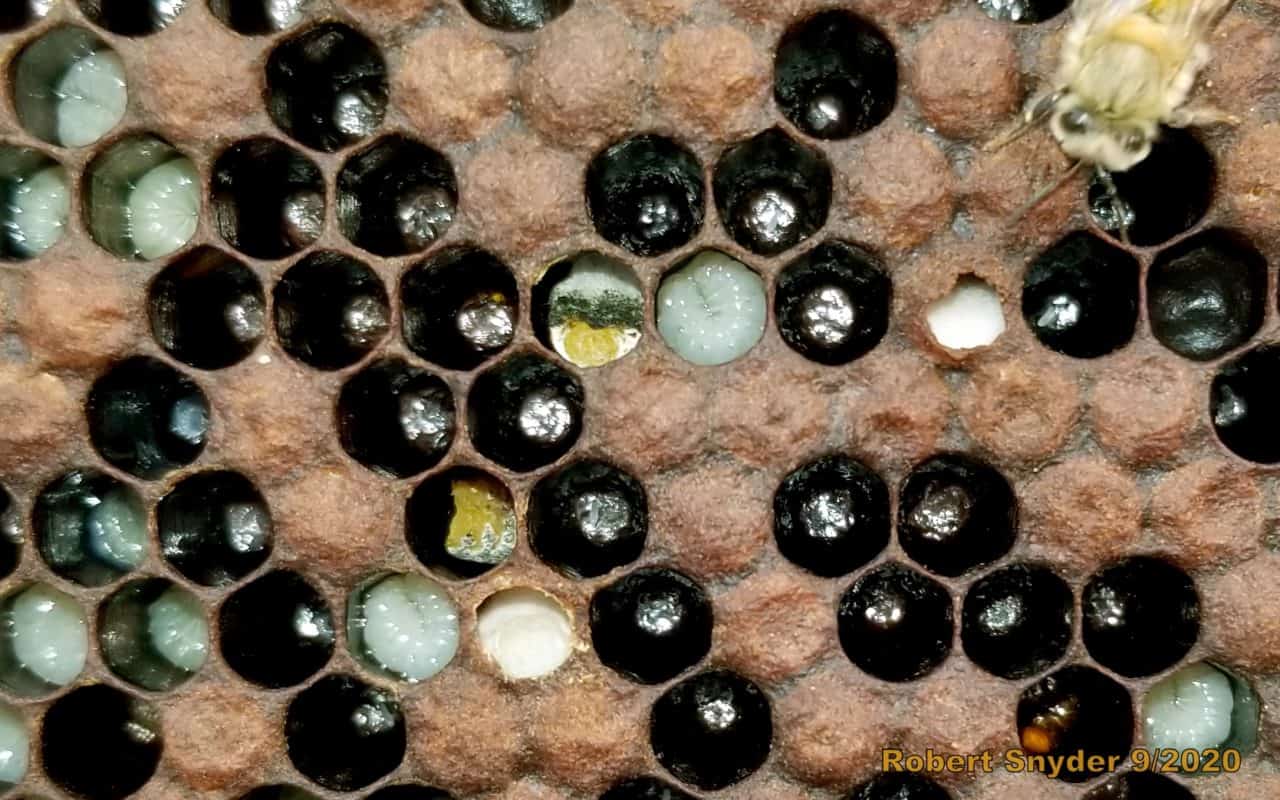When I started inspecting colonies for honey bee diseases in Pennsylvania in 2008, the first and most prevalent disease I found was chalkbrood. I observed this disease a few weeks into the spring season while inspecting a few colonies. I had seen the disease on several other occasions, so it was very easy to identify by the hard “chalk-like” mummies inside the cells.
Ascosphaera apis is the fungus responsible for this bee disease. The exact origin of chalkbrood is unknown, but it most likely arrived from Europe with the alfalfa leafcutter bee (Megachile rotundata), when the bee species was introduced to assist with pollination demands in the United States.
You may ask, “How do honey bees become infected with chalkbrood?” Worker larvae are infected when fed spore-contaminated pollen and honey. The spores quickly germinate, and the vegetative state of the fungi will out-compete the larvae for food, usually infecting the larvae from the bottom up. Before becoming mummies, infected larvae are often uncapped and may look similar to Sacbrood virus (SBV) infected larvae. However, the heads of chalkbrood infected larvae are often slightly sunken, making the top rounded, as opposed to pointed like SBV infected larvae. You can pull out a few suspect larvae to see if the bottom is starting to be consumed by the fungus.
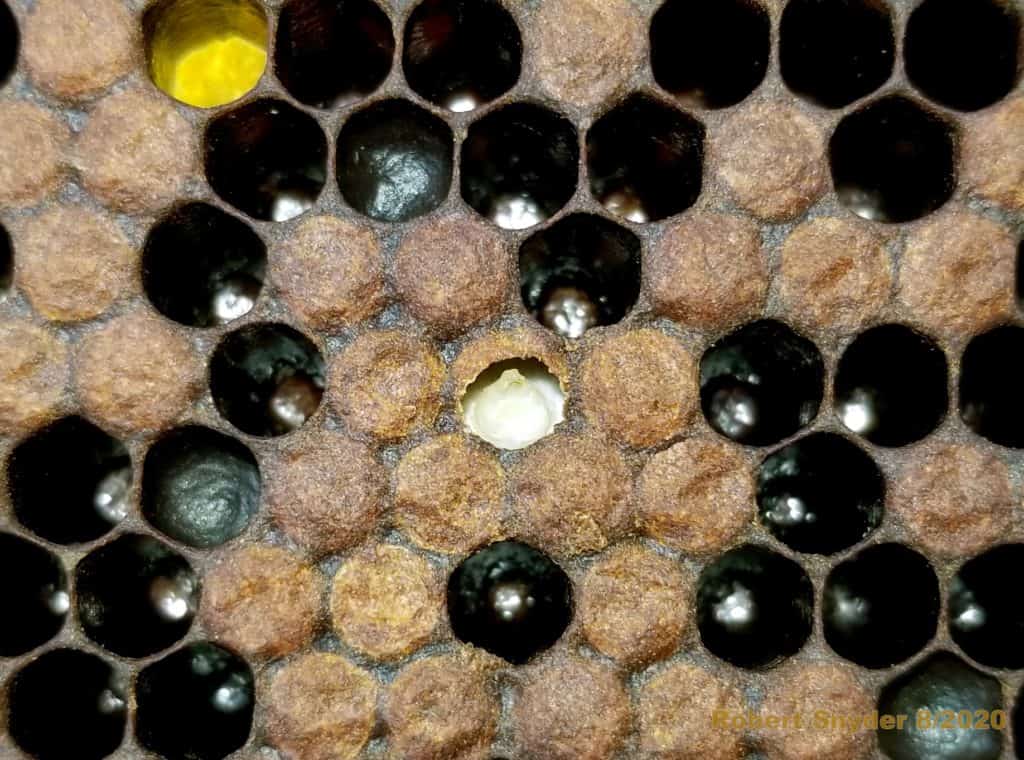
The color of chalkbrood ranges from white to grey then starts to turn black when the fungus is producing spores or fruiting bodies and ready to reproduce. This is the most infectious stage of chalkbrood. The black looking mummies are often what you see on the bottom board, outside on the entrance or in front of the hive. At this point these mummies can spread spores to other colonies in the area.

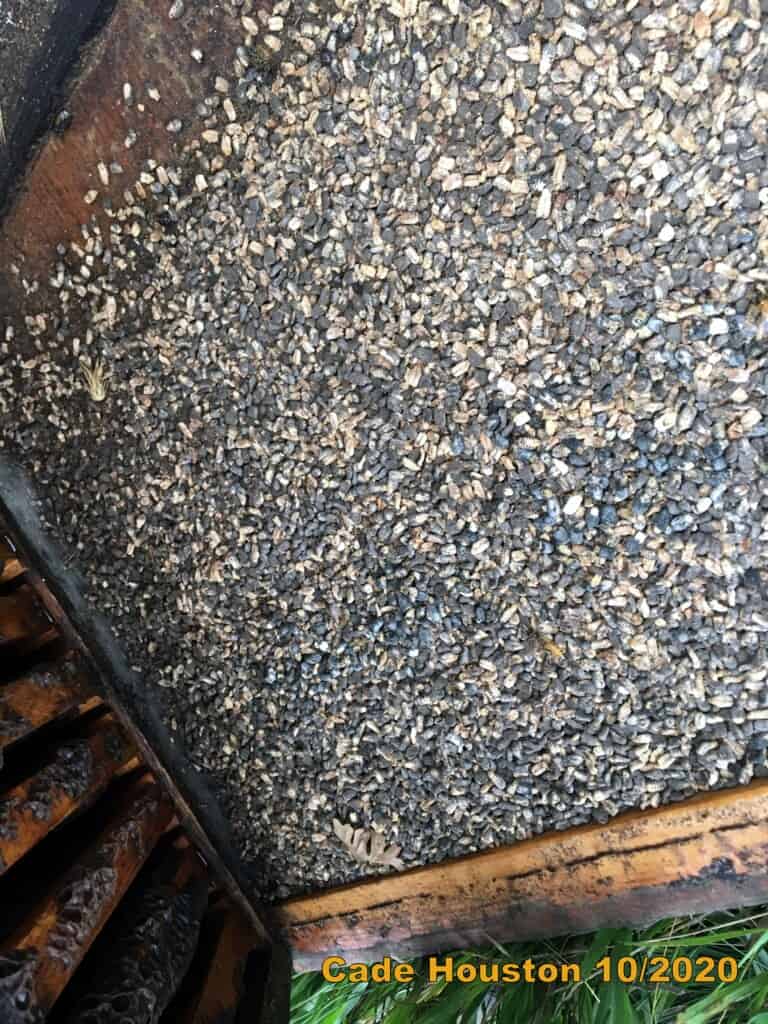
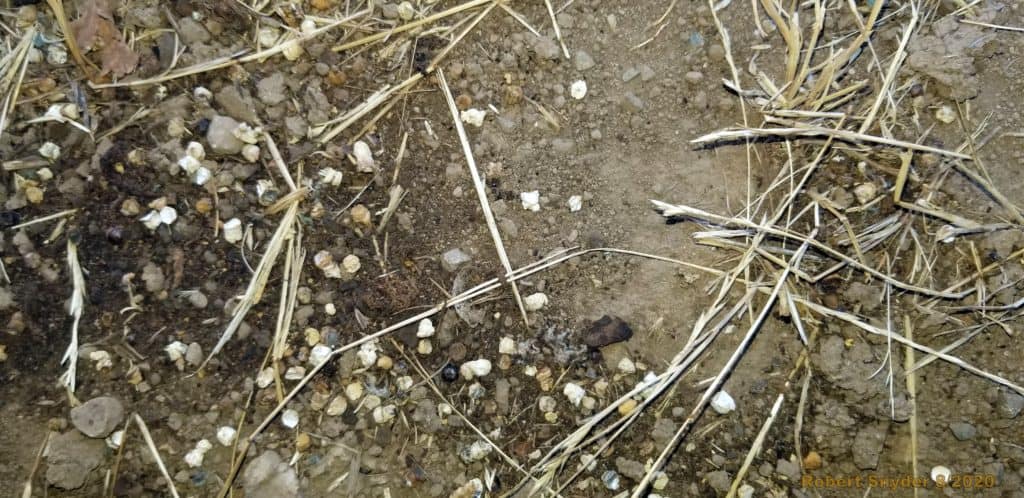
We typically observe chalkbrood during the spring but symptoms can be seen throughout the year. There are very few remedies to control chalkbrood. Thymol treatments, such as Apiguard claim to be effective against chalkbrood. Although we have no strong data to back up this claim, the treatment may have a ‘cleaning effect’ on bees. Often times the bees go into overdrive to clean out the thymol crystals from the treatment, and in turn clean the rest of the hive, including dead brood and mummies. The bee’s cleaning behavior increases when the treatment is applied at higher temperatures. I have even seen the queen shut down during this treatment.
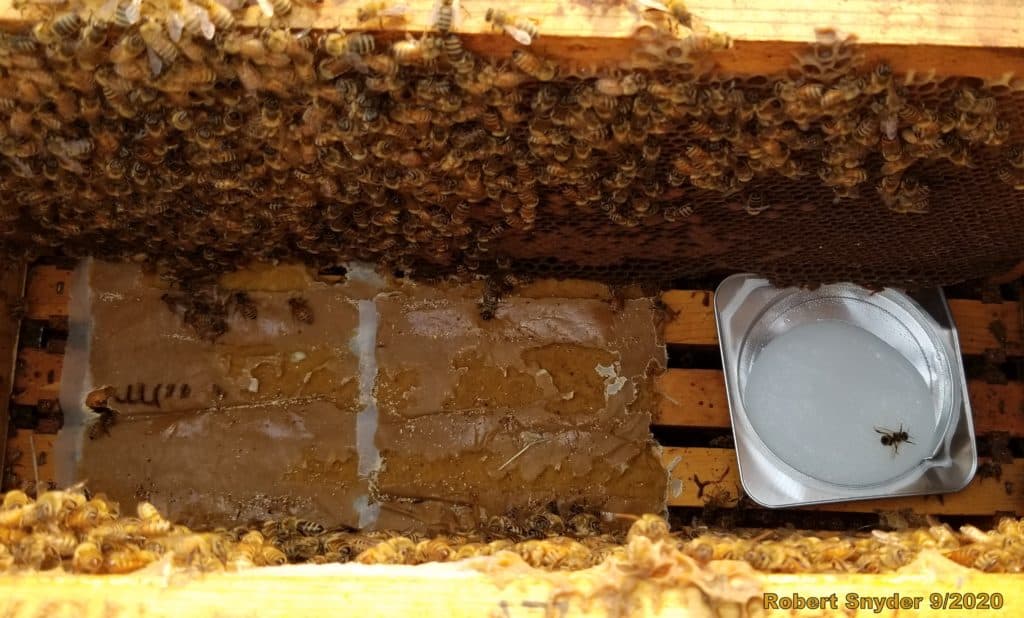
A lack of ventilation in the hive, accumulated water or adding old moldy equipment, all increase moisture levels in the hives and may encourage fungal growth. Also, the lack of population may be a contributing factor for a chalkbrood outbreak in the colonies. Disrupting the brood to bees ratio can cause chalkbrood. Proper hive ventilation may help to prevent chalkbrood. I have also heard of beekeepers using BeeOptimum, a syrup additive, they claim helps prevent the disease. And lastly, requeening and removing highly infected frames is another way beekeepers can combat the fungus. Another way to prevent the fungus is to buy hygienic stock, as hygienic bees will remove the mummies before the infection rate increases. I have included 2 images below that show a hygienic colony vs. a non-hygienic colony
